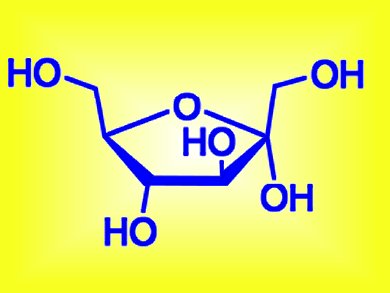Cellulose is the most abundant organic compound available on Earth and it could serve as a potentially inexhaustible source of materials for chemical industry and cheap bio-fuels in the near future. Development of green, eco-friendly procedures for cellulose conversion is the key goal of modern science and technology.
Cellulose can be dissolved in ionic liquids without derivatization in high concentrations. Ionic liquids mediate conversion of these carbohydrate materials into valuable platform chemicals that are required for the industrial and fuel technologies. In spite of extremely useful applications, the molecular nature of chemical transformations taking place with carbohydrates dissolved in ionic liquids remains a puzzle.
Valentin Ananikov and co-workers, Zelinsky Institute of Organic Chemistry, Russian Academy of Sciences, have developed a special NMR reactor for direct monitoring of chemical reactions in ionic liquids. It was found that simple dissolution of fructose in [BMIM][Cl] ionic liquid significantly changes anomeric composition and favors formation of open fructoketose form. The open fructoketose form was not detected in water solutions, thus a rare example of molecular impact of ionic liquids has been revealed.

A series of chemical transformations towards the platform chemical 5-hydroxymethylfurfural (5-HMF) were followed by NMR in situ in ionic liquids. Ananikov and his team for the first time have resolved anomers of carbohydrates involved in conversion of fructose and glucose units into 5-HMF directly in ionic liquids. The analytic technology makes convenient NMR measurements possible in ionic liquids and it is anticipated to play an important role in the further studies in this field.
- The First Molecular Level Monitoring of Carbohydrate Conversion to 5-Hydroxymethylfurfural in Ionic Liquids. B2O3 — An Efficient Dual-Function Metal-Free Promoter for Environmentally Benign Applications,
E. A. Khokhlova, V. V. Kachala, V. P. Ananikov,
ChemSusChem 2012.
DOI: 10.1002/cssc.201100670



